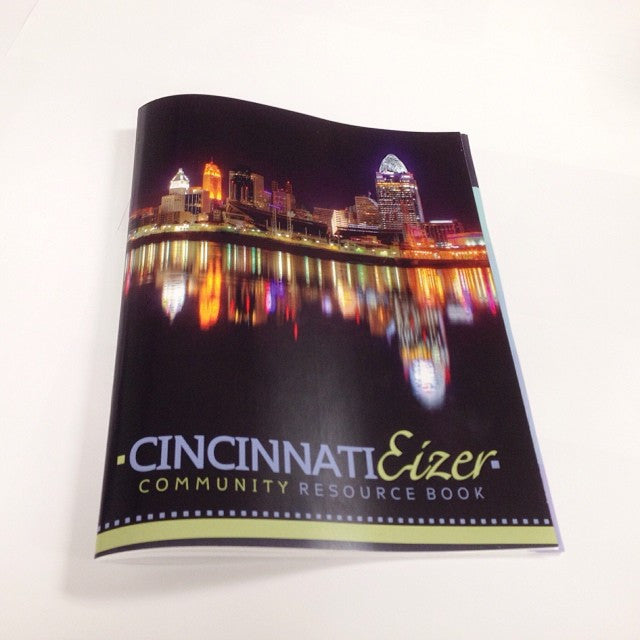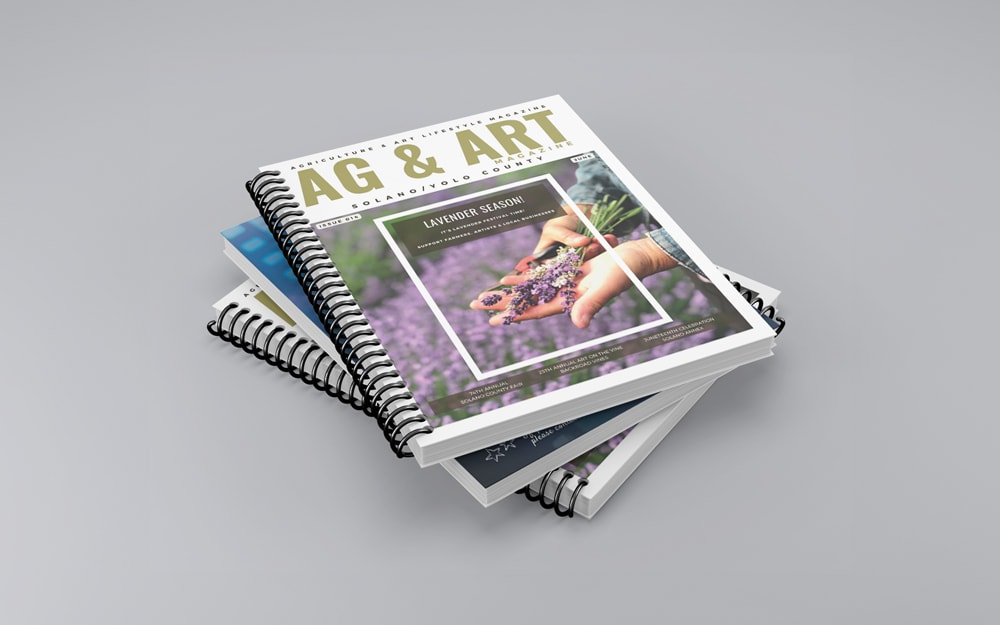How to Choose the Right Binding Style for Your Booklet Printing Needs
How to Choose the Right Binding Style for Your Booklet Printing Needs
Blog Article
The Vital Guide to Comprehending Booklet Printing Options and Techniques
The procedure of booklet printing involves numerous considerations that can substantially affect the end product. From selecting the ideal style and size to comprehending the nuances of binding methods, each option plays an important role. In addition, factors such as paper stock and printing methods further influence the performance of the booklet. As one browses these alternatives, it becomes essential to comprehend exactly how they interconnect and what that suggests for the total result.
Recognizing Brochure Layouts and Dimensions
When taking into consideration pamphlet printing, recognizing the various styles and dimensions offered is vital for achieving the desired presentation. Brochures can be created in countless formats, including saddle-stitched, spiral-bound, and perfect-bound, each offering distinctive advantages. Typical dimensions vary from basic letter (8.5 x 11 inches) to smaller sized choices like A5 (5.8 x 8.3 inches), permitting adaptability based on material and target audience.Selecting the appropriate dimension can influence both the layout and reader involvement. Larger dimensions might match aesthetically driven material, while smaller sized layouts may be a lot more mobile and straightforward. Additionally, the variety of pages influences the option of binding approach, as thicker pamphlets may call for stronger bindings. Eventually, comprehending these facets permits an extra tailored approach, ensuring that the end product lines up with the designated message and visual, boosting the total efficiency of the communication.
Choosing the Right Paper Supply

Binding Methods: Factors To Consider and options
When it involves binding approaches for brochures, several choices are readily available, each with unique benefits. Saddle stitch binding offers an affordable service for thinner pamphlets, while ideal binding strategies supply an even more sleek search for thicker publications. Wire-O binding stands apart for its durability and ease of usage, making it perfect for documents that call for versatility.
Saddle Stitch Binding
Saddle stitch binding uses a sensible and cost-efficient option for constructing brochures, making it a preferred choice amongst services and authors. This binding technique includes folding sheets of paper in half and stapling them along the fold line, producing a cool and orderly appearance. Usually ideal for pamphlets with a lower web page matter, saddle stitching is ideal for magazines, sales brochures, and instructional materials. The simplicity of this technique enables quick manufacturing and is usually preferred for brief runs or advertising things. It is vital to note that saddle stitch binding may not be suitable for thicker pamphlets, as the spinal column might not hold up under enhanced weight. Generally, it remains a dependable alternative for lots of printing tasks.
Perfect Binding Techniques
Perfect binding is a widely utilized technique that offers a expert and sleek surface to booklets and publications. This method includes gluing the web pages with each other at the spine utilizing a solid adhesive, enabling a tidy edge and the capacity to hold a bigger variety of pages compared to saddle sewing. Perfect binding is especially appropriate for thicker brochures, such as catalogs and annual records, where a strong, level spine is wanted. In addition, it offers the option for a printed cover that can be made to boost aesthetic appeal. Nevertheless, considerations such as page matter, paper weight, and the intended use the brochure should be taken into account, as they can impact durability and total high quality.
Wire-O Binding Options
Wire-O binding, understood for its resilience and adaptability, offers a superb option for pamphlets that require very easy web page turning and a specialist appearance. This binding method employs a collection of steel loopholes that hold pages firmly, permitting them to lie flat when open. It is specifically ideal for guidebooks, brochures, and presentations due to its robust nature. Wire-O binding is offered in different colors and diameters, fitting various web page matters and densities. Furthermore, it permits the inclusion of covers and tabs, boosting the brochure's overall visual. Factors to consider for Wire-O binding consist of the choice of cord shade, the dimension of the loopholes, and the degree of customization desired, every one of which can greatly influence the final product's look and performance.
Digital vs. Offset Printing: Which Is Best for You?
When choosing a printing approach for brochures, comprehending the differences between digital and offset printing is important. Digital printing look at this web-site uses modern technology to generate top notch prints rapidly and cost effectively, making it perfect for short runs or tasks needing quick turnaround times. It enables personalization, providing the capacity to print on-demand with marginal waste.In comparison, offset printing is a typical approach that masters producing large amounts with constant high quality. It entails moving ink from a plate to a rubber covering, then to the paper, which causes lively shades and precise information. Nevertheless, offset printing normally calls for longer arrangement times and is more economical for bigger volumes.Ultimately, the option between electronic and offset printing depends upon job requirements, budget, and preferred amount. For small, time-sensitive jobs, digital could be the most effective choice, while offset might be preferable for bigger, top notch productions.

Creating Your Booklet: Tips and Ideal Practices
When designing a brochure, cautious focus to design, font style choice, and shade usage can substantially boost its efficiency. A well-structured design overviews the reader's eye, while ideal fonts ensure readability and share the wanted tone. Furthermore, effective usage of shade can stimulate feelings and emphasize crucial info, making the general style more impactful.
Picking the Right Design
How can one properly choose the best format for a booklet? Initially, it is important to assess the booklet's objective and target audience. A tidy, arranged design enhances readability and involvement. Using a grid system can assist in straightening components continually, creating an expert look. In addition, including visual pecking order with differing sizes and positionings of pictures and text can lead the viewers's eye and emphasize key info. It is also essential to leave sufficient white room, which prevents congestion and permits better focus. Testing different formats with mock-ups can supply insight right into exactly how the style executes in real-world circumstances, making sure that the last product meets both useful and visual requirements. Useful Selecting Suitable Fonts
An appropriate font style can significantly enhance the overall layout of a pamphlet, complementing the format and strengthening the description material's message. The option of typefaces ought to think about readability, specifically for body text, as it ensures the details is accessible to all viewers. Sans-serif typefaces are often chosen for digital formats, while serif fonts can offer a typical feeling in printed products. It's suggested to limit font selections to 2 or 3 to maintain aesthetic coherence. Additionally, font size plays a vital function; headings should be not frustrating but distinct, while body message ought to be comfortable for analysis. When selecting fonts, placement with the booklet's theme and target audience is important for effective communication and visual charm.
Effective Use of Shade
Color acts as an effective tool in pamphlet design, leading and forming assumptions reader emotions. It can evoke sensations of depend on, peace, or exhilaration, depending upon the shades chosen. Designers must consider color concept concepts, making certain that the selected scheme important site aligns with the booklet's message and target audience. Making use of warm colors like red and orange can produce urgency, while cooler tones like blue and green foster tranquility.Additionally, contrast plays a crucial duty; corresponding shades can improve readability and visual allure. Uniformity in color usage across web pages even more reinforces brand identity and communication. Inevitably, reliable color execution not only catches attention yet likewise enhances the brochure's purpose, making it a crucial element of effective layout.
Finishing Touches: Coatings and Unique Effects
While numerous think about the content and layout of a booklet the most vital components, the completing touches, such as layers and unique effects, play a vital duty in enhancing its total charm. Coatings can offer protection and longevity, ensuring that the pamphlet stands up to deterioration. Matte coatings offer a sophisticated, non-reflective surface area, while glossy coverings can make shades show up more lively and distinctive. Special effects, like embossing or aluminum foil marking, add a tactile measurement that can produce an unforgettable perception. These techniques can highlight certain areas, drawing focus to vital details or creating aesthetic passion. In addition, UV layer can offer a high-shine coating that raises the general look.Together, these finishing touches not just enhance the pamphlet's aesthetic however additionally communicate expertise and interest to information, ultimately leaving an enduring effect on the reader.
Price Factors To Consider for Brochure Printing
Comprehending the various expense factors to consider for pamphlet printing is essential for companies and companies aiming to maximize their budgets. Key factors affecting prices include the choice of binding, paper, and ink methods. Higher high quality products, such as premium paper or specialized inks, commonly boost the overall cost. Additionally, the size and page count of the booklet play a significant role; larger brochures require even more resources and time to produce.Another crucial consideration is the printing technique, whether electronic or balanced out, as each has its own prices structure and suitability for different amounts. Companies should likewise consider style expenses, which can vary based on intricacy and making use of specialist solutions. Eventually, shipping and handling costs can contribute to the overall, particularly for huge orders. By assessing these components, companies can make educated decisions that align with their financial capacities while attaining the desired high quality in their published materials.
Regularly Asked Concerns
What Are the Ecological Effects of Pamphlet Printing?
The ecological influences of booklet printing consist of deforestation from paper production, carbon discharges from transport, and waste generation from disposed of materials - Booklet Printing. Sustainable techniques, such as using recycled paper and green inks, can reduce these effects
Exactly How Can I Guarantee Color Precision in My Pamphlet?
To assure shade precision in a brochure, one need to make use of calibrated screens, utilize expert color profiles, conduct examination prints, and select top notch printing solutions that supply shade matching and proofing options for ideal results.
What Is the Typical Turnaround Time for Brochure Printing?
The regular turn-around time for pamphlet printing differs depending on the complexity and amount - Booklet Printing. Generally, it ranges from a few days to two weeks, influenced by aspects such as printing approaches and ending up needs
Are There Minimum Order Quantities for Brochure Printing?

Can I Print Pamphlets in Multiple Languages?
Publishing booklets in several languages is feasible. Numerous printing solutions use alternatives for bilingual or multilingual designs, enabling reliable communication. Cautious preparation guarantees that design aspects fit various languages without endangering readability or appearances. Additionally, elements such as paper supply and printing strategies additional influence the effectiveness of the pamphlet. When considering brochure printing, understanding the numerous formats and sizes available is essential for accomplishing the wanted presentation. When selecting a printing technique for brochures, recognizing the distinctions in between digital and balance out printing is crucial. In addition, the dimension and web page matter of the booklet play a considerable function; bigger booklets call for more resources and time to produce.Another vital factor to consider is the printing strategy, whether electronic or countered, as each has its own rates structure and suitability for various quantities. The ecological impacts of brochure printing consist of deforestation from paper manufacturing, carbon discharges from transport, and waste generation from thrown out products.
Report this page